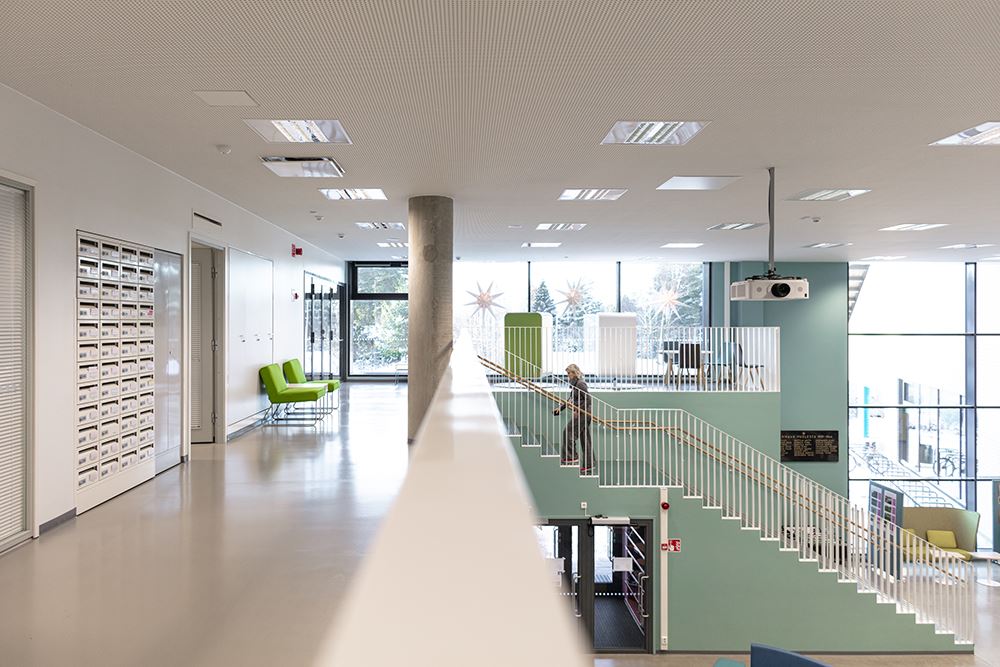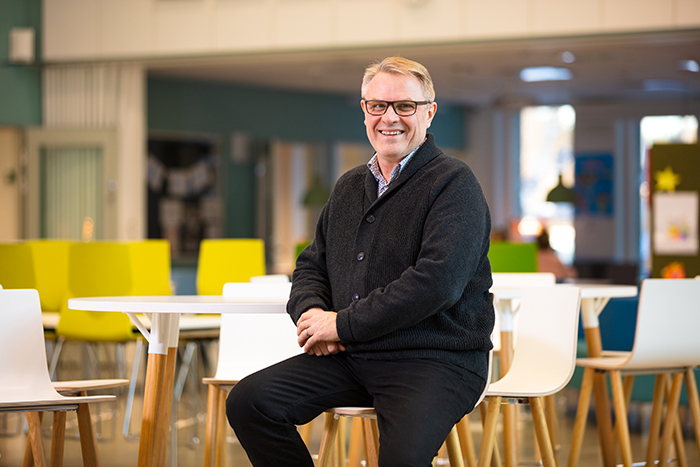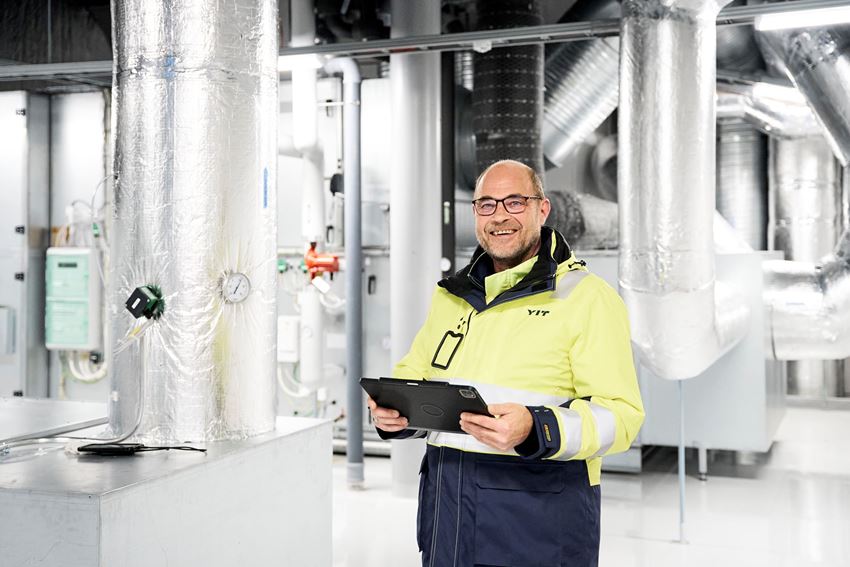Sustainable data centers as a service
- Work
- Premises
- Life Cycle Project
- 5/5/2020
Life cycle model gains popularity in business premises projects – why?
Hollola and Porvoo municipalities in Finland have a lot of experience in funding public construction projects with the life cycle model. The people behind the decisions reveal their tips for successful projects.

The PPP (public-private partnership) and life cycle models are gaining popularity in business premises and road projects. The main difference between the two models is that in the life cycle model, the client obtains the funding, whereas in the PPP model, the service provider funds the project.
The number of life cycle models has grown in business premises projects since 2009. For several years, the number of life cycle agreements per year was 2–3, but in 2019, the number increased to seven, and there are seven agreements under way in the first months of 2020. A total of over 50 life cycle projects have been implemented or are in progress in Finland. So far, the model has been mainly used by municipalities and cities, but it could well be used in private projects, as well.
Why do clients choose the life cycle model and what are the reasons for its popularity?
To sum up, in a life cycle model a private company is responsible for the entire project for an extended period compared to other types of contracts: the typical length of the maintenance responsibility after planning and implementation is 20 years. This is far more than in a conventional design-build project where the guarantee period is two years.
Earlier, some of the clients might have been waiting for results and experiences from others, but now the benefits of the model have become common knowledge. Successful projects are one of the reasons why the model has come into more wide-spread use.
Noticeable benefits
If the life cycle project is, for example, a school, the company ensures that the conditions and usability of the school remain at the level agreed in the contract for 20 years. This means more security and predictability for the municipality that is the client and, unlike in other alternative models, the municipality receives all the services they need from the same place. There is only one entity that manages all the matters related to the project.
In the case of premises such as schools, multipurpose buildings and health centres, indoor air issues are a major driver for the life cycle model. The extended and extensive responsibility ensures that the property remains functional for the 20-year contract period. At the end of the period, the building is handed over to the client in the condition that is specified in the agreement, and there is no repair backlog.
The life cycle model also has many other advantages. It does not include any requirements on funding, allowing municipalities to choose their funding scheme. Furthermore, the service fee of the life cycle model is based on performance; the client only pays for the services it receives, and the annual maintenance costs are specified in advance for the duration of the contract.
The life cycle model should not be confused with the PPP model that also includes a funding solution. This model has been used in transport infrastructure construction, and the first business premises project to be built with the PPP model has been started in Espoo. The PPP model is not the same as the life cycle model from the point of view of legal matters and content, although they are often treated as synonyms.
Experiences from Hollola and Porvoo
A school is a typical project that is built with the life cycle model. One such example is a school project in Porvoo. The project was completed in 2018, and it comprises five buildings: Tolkkinen school, Gammelbacka daycare centre and child welfare clinic, Peippola day-care centre, Toukovuori day-care centre and Kevätkumpu (Vårberga) school and primary school. A library, school gym and youth centre will also be completed in connection with the Kevätkumpu school.
Tony Lökfors, Project Manager at the City of Porvoo throughout the project, says that risk management was the primary reason for selecting the life cycle model.
“Porvoo has roughly two hundred properties, and we wanted to divide the risks and responsibilities of the buildings. At first, we wanted to use leasing for this life cycle project, but at the end, the political will was that the city should own the properties and obtain maintenance through the life cycle model.”
“Another major advantage was that we could compete several projects with one competitive tendering,” Lökfors adds.
TONY LÖKFORS, PORVOO: FIVE TIPS FOR SUCCESSFUL LIFE CYCLE PROJECTS
- Reserve sufficient time for the procurement. Everything will take more time than you expected. It is important to ensure that your organisation has enough resources or consult external experts, if needed.
- It is advisable to make municipal decision-makers committed to the project with the help of discussions and decisions-in-principle. Life cycle projects require a lot of work, and potential contractors have little incentive to submit a tender worth hundreds of thousands of euros if the political decision concerning the project has not been made yet.
- In my opinion, funding should not be included in the same round of procurements, but the municipality should fund the project or use leasing.
- It is crucial to have a mutual understanding of the content of the maintenance responsibility. The agreement period is 25 years, and it should be a win-win situation that benefits both parties.
- It is a good idea to appoint groups that discuss matters related to maintenance. In Porvoo, we have a maintenance steering group and separate meetings for users. Each group discusses different things.
The life cycle model has also been used in Hollola. The construction of the Heinsuo and Kalliola schools was started in 2015 and completed in summer 2017. Tuomo Vesikko from Hollolan tilapalvelu Oy was the construction manager for the schools.

The new schools were built for the municipality’s increasing needs and they crucially decreased difficult indoor air quality problems. It was also important that the premises supported the national curricula of the Finnish National Board of Education, which entered into force in 2016, and gave young people an opportunity to benefit from an open learning environment and phenomenon-based learning.
According to Vesikko, the municipality of Hollola chose the life cycle model because of its previous negative experiences with other contract models.
“A conventional contract can easily cover ten separate agreements, and we have to get each of them right in order to have a successful project. The life cycle model, on the other hand, has only one agreement, which makes it quite different.”
In the life cycle model, the contractor is responsible for maintenance for 20 years, and in Vesikko’s view, this reduced the risks for Hollola compared to traditional contract models.
TUOMO VESIKKO, HOLLOLA: FIVE TIPS FOR SUCCESSFUL LIFE CYCLE PROJECTS
- If you are building a school, think about the pedagogic model and the ways of learning you want to promote. Will there be co-teaching or classrooms for special needs students? Do you want to support self-management and how do you ensure user comfort? Discussing these questions and planning can take up to two years.
- Next, specify the functional requirements of the project. In other words, determine what the user wants from the premises. For example, what kinds of fixtures or spaces are required and how do these support the pedagogic principles.
- What are the technical requirements? Air exchange system, temperature, air quality, light and acoustics are among the details that need to be decided.
- Before construction starts, make sure that all the agreements are in order. Document the level of maintenance and procedures in the case of faults. In an ideal situation, the sensors recognise the fault and the property manager repairs it even before the customer notices anything.
- It is important to monitor customer satisfaction. If the conditions of the building deviate from the agreement, its usability is reduced or hindered, which is reflected in the contractor’s compensation.
Kalliola school reaps the benefits of life cycle construction








